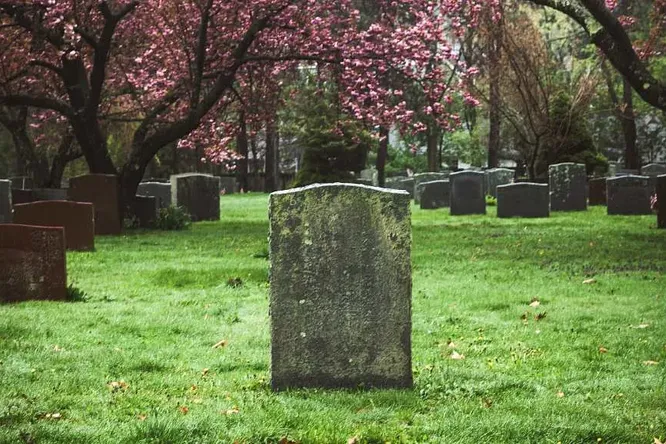What happens to our bodies after death is not a mystery. However, most of the processes that lead to the inevitable disintegration, we sometimes simply do not notice.

The first visible change in the body, occurring 15-20 minutes after death, is the gradual onset of cadaverous pallor. It occurs due to the fact that the blood stops moving through the capillaries, the smallest blood vessels of the body. This process is identical for all people, but less noticeable in people with darker skin.
Meanwhile, the body cools down, the temperature decreases by about 0.84 ° C per hour. But even when the body is cold, it is still full of life — scientists compare a decomposing body with an ecosystem. Autolysis, which begins the decomposition process, is also called “self-digestion”: enzymes begin to digest the membranes of oxygen-deprived cells. Damaged blood cells pour out of their ruptured vessels in a rush of movement. When they settle in capillaries and other small blood vessels, they cause discoloration of the skin surface. Although this discoloration (including a purplish-blue hue and reddish spots) begins to appear about an hour after death, it becomes clearly noticeable only after a few hours.
Such changes are almost endless after death. When the body is alive, filaments, consisting mainly of the proteins actin and myosin, interact by binding or releasing from each other to contract or relax muscles. This makes body movement possible. After death, chemical bridges gradually form between actin and myocin, so the muscles contract and remain so until the bridges collapse. This stiffness, known as rigor mortis, occurs about two to six hours after death. Rigor mortis complicates the autopsy or preparation of the body for burial, because the body loses the flexibility that it had during life. “It may take a little bit of strength to overcome rigor mortis,” explained undertaker Holly Williams in an interview with BBC Future. “Usually, the fresher the body, the easier it is for me to work with it.”
There are many bacteria in the human body. While the body is alive, they are concentrated in the intestines, but are mainly kept by the immune system from penetrating into other internal organs. However, after death, these bacteria can “feed” the whole body. First, they digest the intestines and nearby tissues. Then the bacteria expand their territories, penetrating into the capillaries and making their way into the heart and brain to eat. One study conducted by forensic medical expert Gulnaz Javan and others showed that it takes 58 hours for bacteria to enter the liver, spleen, heart and brain.
This stage of decomposition, called putrefaction, can be fully realized only after a few days. The breakdown of carbohydrates, proteins and other compounds in the body, caused mainly by bacteria and insect larvae, leads to the formation of gases that swell the stomach and eventually damage the skin, which attracts other insects to the feast. Decomposition takes time. How long may depend on factors such as the cause of death, environmental conditions, or even the clothes on the body. Decomposition is a “continuous process,” explained the forensic medical expert M. Lee Goff in an interview with Medical News Today, — “beginning at the moment of death and ending when the body turns into a skeleton.”
To slow down this unpleasant process, people have developed various methods of preserving the body. The good preservation of the body has long been the main concern of the morgue, especially if it had to be put on display during mourning. So, after the assassination of US President Abraham Lincoln, his body was transported by train through seven states so that citizens could see him — some waited for this honor until five o’clock.
Embalming is one of the ways to preserve the body after death. A wide range of substances, including vinegar, wine, brandy and honey, were used to “pickle” corpses and thus slow down rotting. With the modern embalming procedure, blood is removed from the vein, and another liquid, usually based on a formaldehyde solution in water, is injected into a large artery. The cavity fluid is also removed and replaced with a preservative. Although this embalming option is not permanent, it serves its purpose — it gives the body a realistic look in the days after death, when mourners will look at it.
